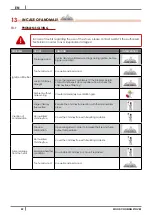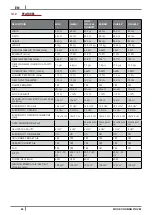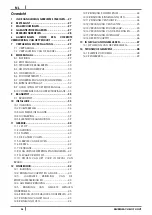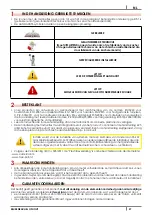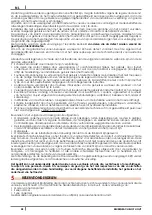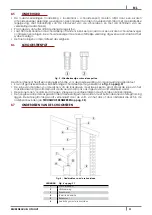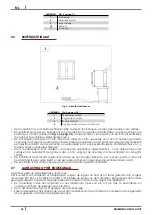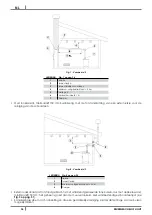
19
WOOD COOKING STOVES
EN
•
Only when the ash is completely extinguished can be throuwn in the organic waste.
•
Clean the ash also in the ash compartment.
12.3
FUME PIPES ANNUAL CLEANING
Clean once a week from soot with brushes.
The cleaning operation must be executed by a specialized stove-repairer who will provide for the cleaning of
fume pipe, chimney flue and chimney pot. He will also check their eficiency and will release a written declaration
of the safety of the appliance. This operation must be executed at least once a year.
12.4
GENERAL CLEANING
For cleaning external and inner parts of the stove do not use steel wools, muriatic acid or other corrosive and
abrasive materials.
12.5
CLEANING OF PAINTED METAL PANELS
To clean painted metal panels use a soft cloth. Do not use degreasant agents like alcool, diluents, acetone,
gasoline because these could irremediably damage the varnish.
12.6
CLEANING OF CERAMIC PANELS
Some stove models has an external lining made up of ceramic. These pieces are handmade therefore they
could inevitably present crazings, seedinesses, shadings.
To clean ceramic panels use a soft and dry cloth. If using any cleaners this will seep through the crazings putting
them in evidence.
12.7
GLASS CLEANING
The glass-ceramic of the fire door is able to stand till 700°C but not to thermal shocks. The probable cleaning with
usual sale product for glass cleaning must be effected at cool glass in order to avoid explosions.
12.8
OVEN CLEANING
Clean the oven inner after every cooking by using a soft cloth with hot water or appropriate products.
Do not ever use a steel wool as they could irreparably damage the surfaces.
12.9
COOKTOP CLEANING
The cast iron plate has an oily protection on th surface which wears out over the time by the use. This could
cause dark or rusty spots on the plate surface. To contrast this problem during log period of no use of the stove,
clean the top with fine-graned emery cloth and then oil the surface with liquid paraffin.
12.10
FUME PASSAGES CLEANING
Clean every year (and if necessary even every month) the oven fume passages inner by scratching and drawing
combustion remains present on the bottom of the boiler.
To have acces to fume passages extract the inner bottom of the oven (see
).
Summary of Contents for MINI
Page 51: ...NOTE...


















